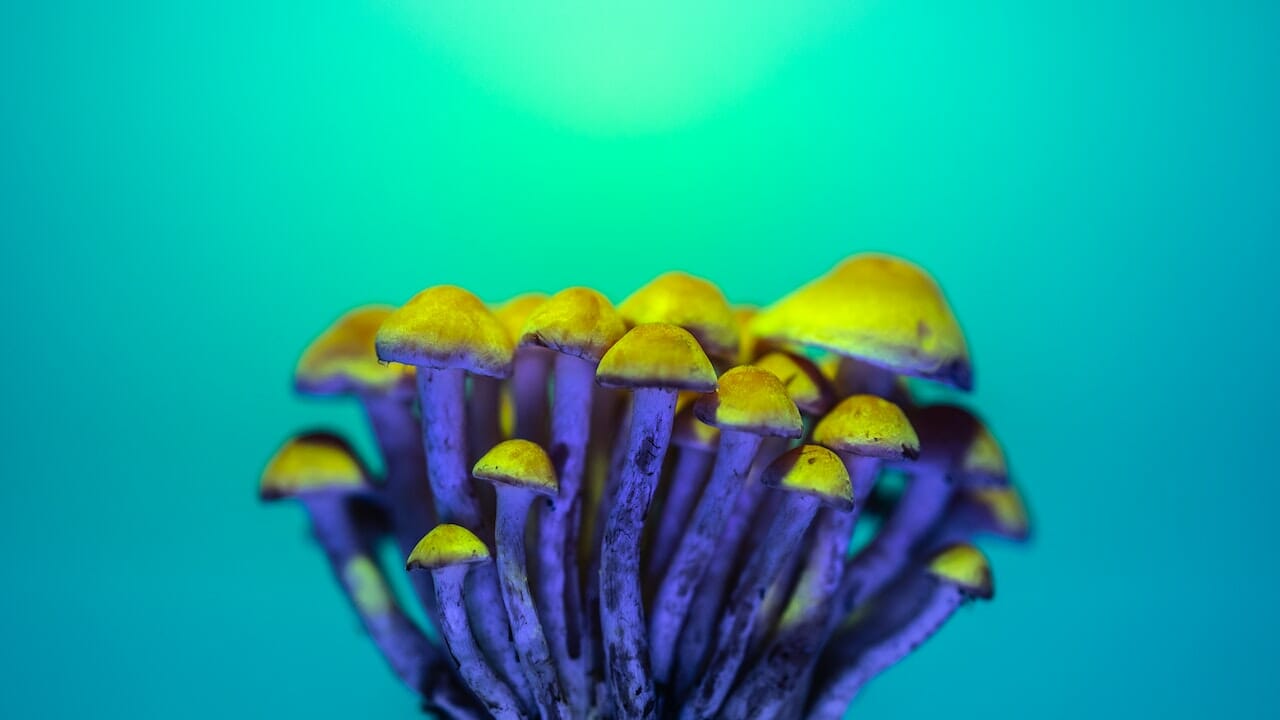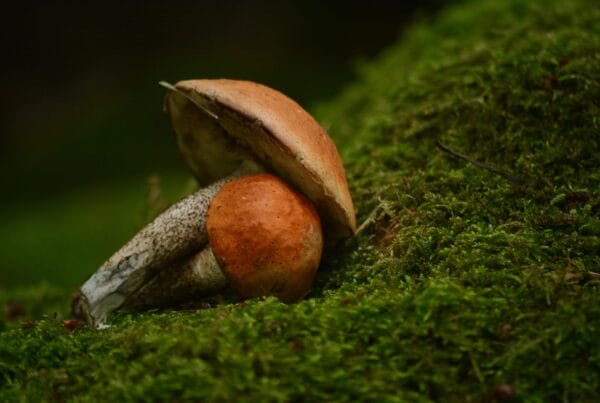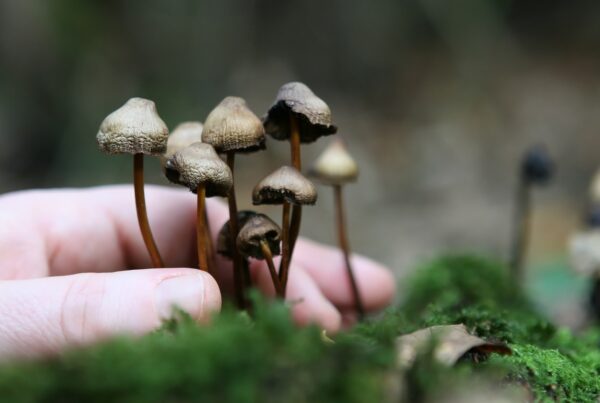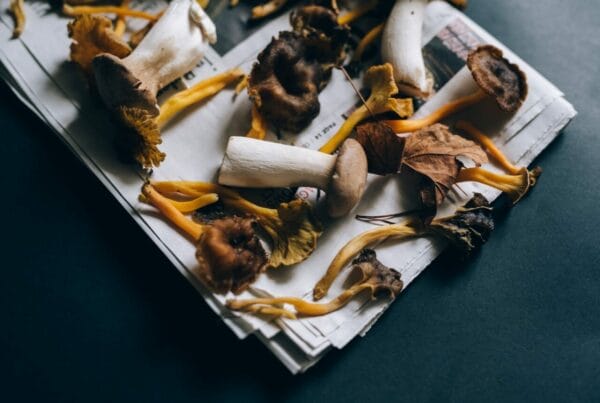Lysergic acid diethylamide (LSD) is a remarkably potent hallucinogenic substance that has been the subject of extensive research. Despite its initial reputation as primarily a recreational drug, LSD is now regarded as a psychoactive compound with potential mental health benefits. This shift in perception has facilitated further research into LSD’s effects, particularly those of more manageable forms such as LSD edibles.
Key Takeaways:
- LSD, a powerful hallucinogen, originates from the ergot fungus.
- LSD shares similarities with psilocybin and interacts with the 5-HT2A receptors.
- LSD can cause alterations in vision, mood changes, ego dissolution, and pseudo-hallucinations.
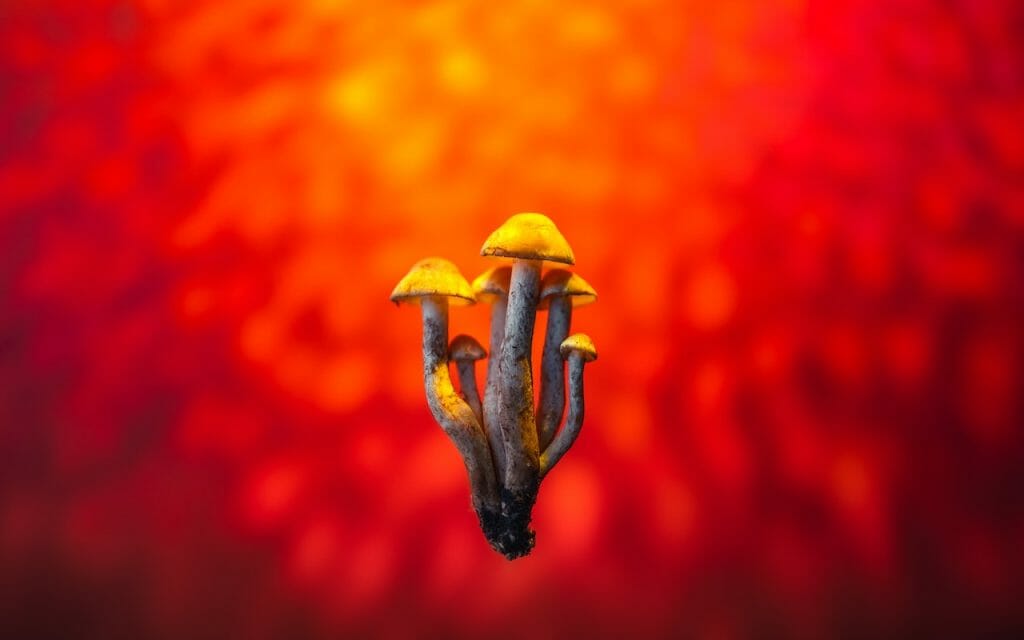
Understanding LSD
LSD is an exceptionally potent hallucinogen that can significantly alter one’s perception of reality and profoundly distort the senses. LSD is derived from “ergot,” a fungus that grows on rye and other grains.
At the molecular level, LSD is a complex chemical that belongs to the ergoline family. It comprises a bicyclic hexahydroindole group and a bicyclic quinoline group (lysergic acid). The term ‘Lysergic Acid Diethylamide’ derives from the functional group attached to its core. LSD’s structure is akin to other ergoline alkaloids, such as ergotamine, found in the ergot fungus Claviceps purpurea, and the neurotransmitter serotonin.
The Effects of LSD
Upon consumption, LSD infiltrates the brain and sets off chemical reactions lasting several hours. LSD can induce the following temporary effects:
- Erratic mood changes
- Distorted perceptions
- Feeling of dizziness
- Decreased appetite
- Impaired motor control
The Benefits What are the Benefits of LSD Consumption?
The benefits of LSD use are diverse and largely contingent on the dosage taken. The majority of studies have investigated the advantages associated with low-dose consumption of this psychedelic substance. We explore below the positive impacts that can arise from LSD use.
Pain Relief and Neuronal Development
Researchers at Maastricht University discovered that a single microdose of LSD can provide pain relief that lasts for a minimum of five hours, perhaps even longer.
In the Cold Pressor Test, where participants immerse their hands in water at a temperature of 3°C (37.4°F) for as long as they can tolerate, those who took a 20 mg dose of LSD were able to keep their hands in the water for 20% longer than those who did not. They also reported experiencing less pain and discomfort.
Furthermore, LSD can promote the development and growth of the brain’s 86 billion neurons. Moderate doses of LSD, ranging from 5 to 20 ug, increase the blood plasma levels of BDNF. This is noteworthy since mood disorders like depression, often associated with neuroplasticity issues, may be mitigated by LSD’s beneficial effects on neuronal health.
Improvement of Mental Health
Dr. Robin Carhart-Harris from Imperial College London introduced the entropic brain hypothesis. According to this theory, mental health disorders can be attributed to rigid thought patterns, perpetuated by an overactive default mode network (DMN). Psychedelic substances like LSD can disrupt the DMN, increase brain entropy, and support the dismantling of negative neural pathways while fostering the creation of positive ones.
A study involving over 1,000 individuals who microdose reported a decrease in depression. Another comprehensive cross-sectional study showed a decline in negative moods and harmful attitudes, alongside an increase in open-mindedness and cognition.
Addiction Treatment
A meta-analysis of randomized-controlled clinical trials involving the use of LSD in psychiatry suggests that it is most effective for treating alcohol dependency. This conclusion is further corroborated by the positive results reported by many patients treated for alcoholism by Humphrey Osmond and at the Spring Grove Hospital Centre in the 1950s and 1960s.
Easing End-of-Life Anxiety and Depression
Research conducted by Dr. Peter Gasser shows that LSD-assisted psychotherapy can significantly reduce anxiety in terminally ill cancer patients related to their impending death. This treatment also seems to improve the perceived quality of life. Currently, a Phase 2 trial is under way to evaluate the potential benefits of LSD therapy for depression.
Deciphering LSD Edibles: Their Composition and Manufacturing Process
LSD edibles are a type of food or beverage infused with the hallucinogenic substance, LSD. They come in a variety of forms, including chocolates, candies, baked goods and even unique products like LSD-infused mints.
Components Inside
- LSD: This is the active ingredient that triggers hallucinogenic effects. It is carefully measured and incorporated into the edible.
- Edible Base: The LSD is usually dissolved or infused into an edible medium such as a gummy, candy, sugar cube, or other ingestible products. These mediums act as the delivery system for the hallucinogenic compound.
- Flavouring and Ingredients: Depending on the specific edible product, flavourings, sweeteners, and other ingredients may be added to enhance taste and texture. These may include natural or artificial flavours, colours, and sugars, and can vary greatly.
Manufacturing Process:
- LSD Synthesis: The process begins with the chemical production of LSD. This step requires a deep understanding of organic chemistry, along with the necessary chemicals, equipment, and a laboratory environment.
- Liquid Formulation: Once the LSD is synthesized, it is commonly converted into a liquid form by dissolving it in a solvent. This liquid acts as a concentrated LSD solution.
- Infusion: The liquid LSD is subsequently infused into an edible medium such as gummy candies, sugar cubes, or blotter paper. The medium absorbs the liquid, enabling oral consumption of the LSD.
The Psychedelic Experience of Psychoactive Compounds in LSD Edibles
LSD triggers profound visual effects. Colours appear more vivid, objects may seem to be encircled by halos or rainbows, and shapes can transform. Regardless of whether the eyes are open or closed, users may see
LSD vividly alters one’s perception of oneself and their environment. The substance can induce a variety of mental states, where thoughts can either feel incredibly clear and meaningful, or lack coherent logic. Other effects might include altered perceptions of time, distance and bodily image. The boundary between self and the external world might appear fuzzy. Some report synesthesia-like experiences, such as seeing music or hearing colours.
Suggested LSD Products
There is a wide array of LSD edibles available, but it’s important to buy from a trusted dispensary. You must confirm that the edibles contain LSD, and not other substances such as PCP (embalming fluid), ecstasy, or ketamine.
Deadhead Chemist – LSD Infused Gummies
Deadhead Chemist offers LSD-infused edibles, each containing 100 micrograms (ug) of LSD, in a range of flavours. Each package contains a single gummy, which has demonstrated potential in aiding individuals with conditions such as obsessive-compulsive disorder (OCD), post-traumatic stress disorder (PTSD), alcohol addiction, depression, and cluster headaches.
Deadhead Chemist – Mint Tea
Deadhead Chemist’s raspberry mint tea presents a tastier and more enjoyable way to experience the effects of LSD. LSD and other psychedelics mimic the serotonin neurotransmitter and enhance the brain’s flow state.
Earthly Delights – Candy Flips
Candy flipping became mainstream during the rave scene in the late 1980s. Today, thrill-seekers and party enthusiasts continue to enjoy the synergy of these two potent substances. Users often experience profound feelings of love and unity, paired with captivating visual effects such as color enhancement, object morphing, and intricate geometric patterns.
Concluding Remarks
LSD is renowned for its ability to foster transformative experiences. With growing scientific insight into this substance, its popularity continues to rise. The advent of LSD edibles introduces a fresh, novel method of consumption. These flavorful delights have gained
Enjoy a safe and pleasurable LSD experience with carefully measured doses.
As the leading provider in Canada of high-grade shrooms online, Magic Mushies Canada boasts a broad spectrum of LSD-infused edibles and cannabis products. Browse our vast collection at your convenience, add your chosen items to your cart, and sit back as we handle the delivery. We also offer a diverse range of psilocybin shrooms, edibles, drinks, and capsules for your convenience. Be sure to check out our LSD delivery page for more details!
Frequently Asked Questions
What differentiates LSD from psilocybin?
CHARACTERISTICS LSD PSILOCYBIN Origin Semi-synthetic chemical compound Occur naturally in fungi Forms Available Tabs, microdots, liquid, gummies, blotter paper Dried mushrooms, capsules, teas, chocolates Potency Highly potent, dosed in micrograms (ug) Varies with mushroom species and preparation Onset and Duration Quick onset (15-60 minutes), short-lasting (3-5 hours) Delayed onset (30-60 minutes), moderate duration (4-6 hours)
How can one avoid adverse experiences with LSD?
- Choose Your Environment Wisely
- Prepare Your Mindset
- Start with a Small Dose
- Have a Trip Supervisor
- Create a Peaceful Atmosphere
- Practice Deep Breathing and Grounding Techniques
- Accept and Let Go
How long do the effects last?
The acid’s effects usually begin to show between 30-60 minutes post-consumption. Those who are more sensitive to psychedelics may start to feel the effects Within 15 minutes, you may start noticing the effects of acid. After about an hour, you’ll be able to confirm whether you’re having a trip. The peak of your trip, the most intense part of the experience, may occur around three hours in. During this time, you might experience a distortion of time, and hallucinations might occur.
Hold on, it’s normal to feel a sense of disconnection from reality at this stage. This peak phase can persist for 3 to 5 hours, followed by a gradual decline that lasts an additional 3 to 5 hours.
How does LSD interact with the human body?
The primary interaction of LSD happens within the brain’s serotonin system, where it binds and stimulates the 5-HT2A receptor. This triggers a cascade of neurochemical and physiological reactions. Various factors can influence the diverse effects of LSD.
Does LSD come in forms other than edibles?
Yes, LSD is available in a variety of forms. The major types of LSD products are blotter paper, liquid solutions, microdot tablets, and gelatin sheets.
Suggested Readings:
| CHARACTERISTICS | LSD | PSILOCYBIN |
| Origin | Semi-synthetic chemical compound | Occur naturally in fungi |
| Forms Available | Tabs, microdots, liquid, gummies, blotter paper | Dried mushrooms, capsules, teas, chocolates |
| Potency | Highly potent, dosed in micrograms (ug) | Varies with mushroom species and preparation |
| Onset and Duration | Quick onset (15-60 minutes), short-lasting (3-5 hours) | Delayed onset (30-60 minutes), moderate duration (4-6 hours) |

